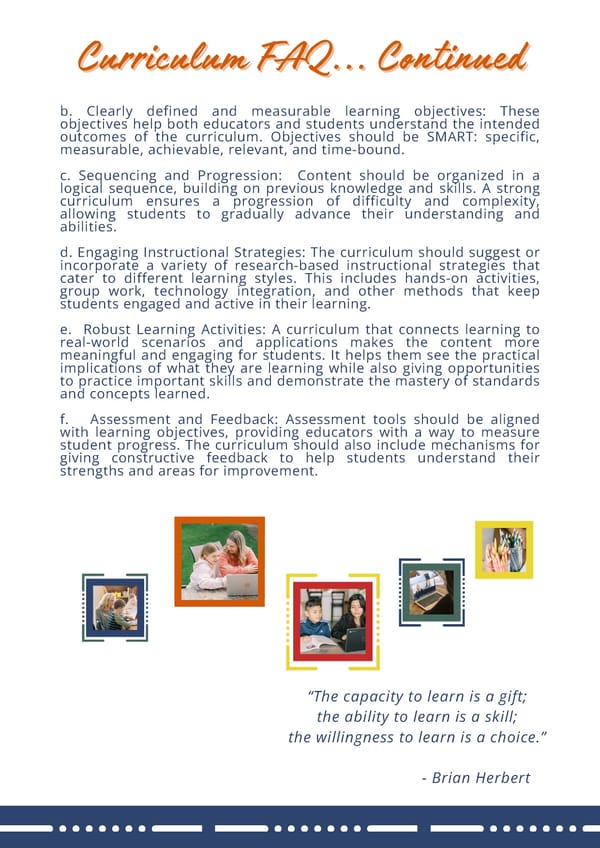Curriculum FAQ... Continued Curriculum FAQ... Continued b. Clearly defined and measurable learning objectives: These objectives help both educators and students understand the intended outcomes of the curriculum. Objectives should be SMART: specific, measurable, achievable, relevant, and time-bound. c. Sequencing and Progression: Content should be organized in a logical sequence, building on previous knowledge and skills. A strong curriculum ensures a progression of difficulty and complexity, allowing students to gradually advance their understanding and abilities. d. Engaging Instructional Strategies: The curriculum should suggest or incorporate a variety of research-based instructional strategies that cater to different learning styles. This includes hands-on activities, group work, technology integration, and other methods that keep students engaged and active in their learning. e. Robust Learning Activities: A curriculum that connects learning to real-world scenarios and applications makes the content more meaningful and engaging for students. It helps them see the practical implications of what they are learning while also giving opportunities to practice important skills and demonstrate the mastery of standards and concepts learned. f. Assessment and Feedback: Assessment tools should be aligned with learning objectives, providing educators with a way to measure student progress. The curriculum should also include mechanisms for giving constructive feedback to help students understand their strengths and areas for improvement. “The capacity to learn is a gift; the ability to learn is a skill; the willingness to learn is a choice.” - Brian Herbert
 Secondary School Startup Guide Page 6 Page 8
Secondary School Startup Guide Page 6 Page 8